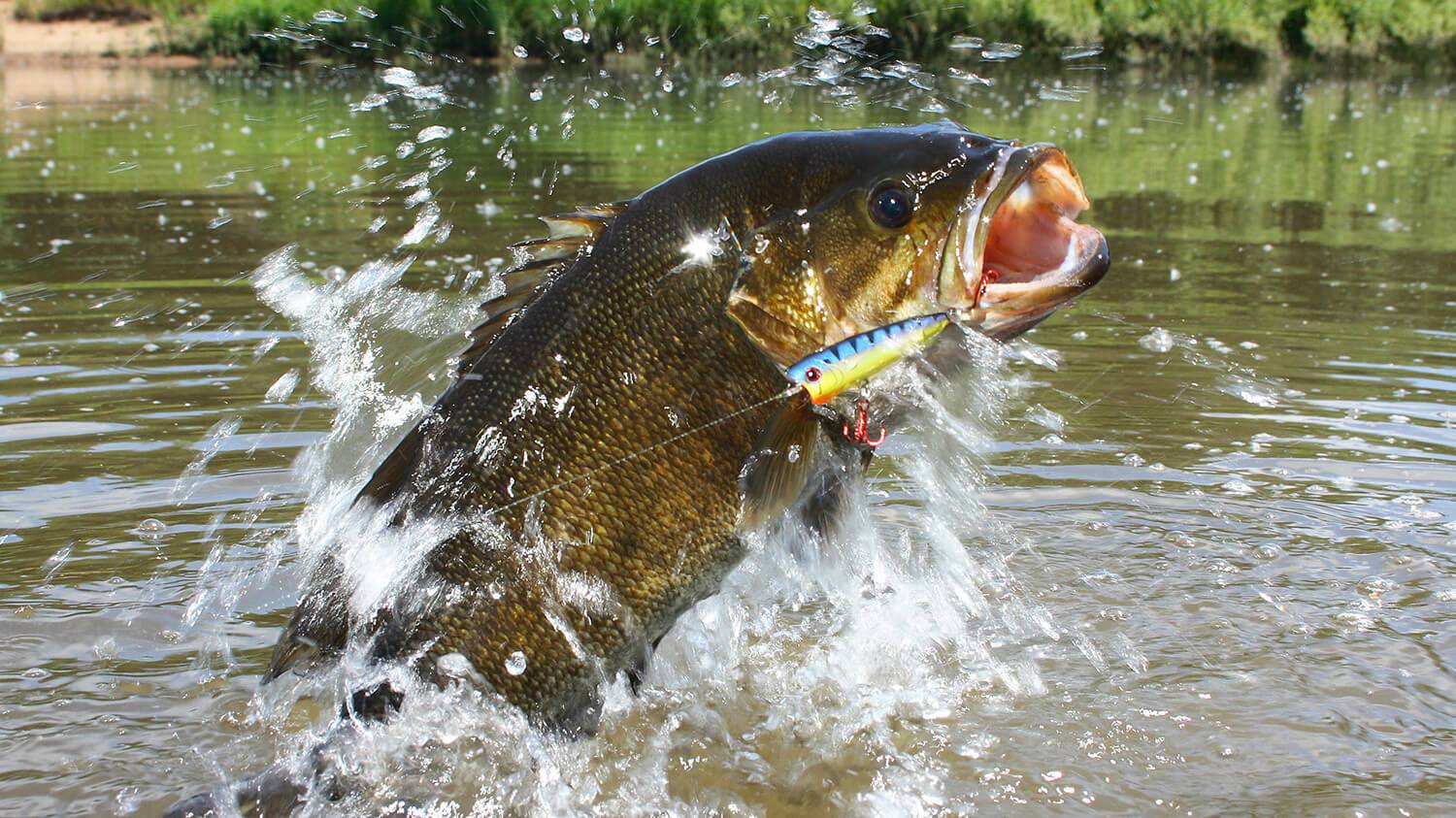Secrets to Catching Summer Bass

Secrets to Catching Summer Bass
The warming temperatures have anglers restless and looking for every opportunity to hit the water, and the hopes of a whopper bass fuels the excitement even more. Here in Iowa, the water is warming up, fish are becoming active and offer a prime opportunity to catch that trophy fish. Summer in Iowa brings sweltering days and with the right tactics and lures, you can haul in largemouths all season long.
Go-To Lures
In June, what works well one day may not work the best the following day. It is a good idea to have a variety of lures and colors available to try. Retrieval may vary too, especially depending on the water conditions. As a rule of thumb, if you find something is working, keep imitating it until it isn’t working. Don’t be afraid to try something new.
Spinnerbaits are a versatile lure, but retrieve speed plays a big role in how effective they are. While a slow to medium retrieve is a good starting point, don’t be afraid to experiment. In murky water however, a fast retrieve can keep the lure high in the water column, where actively feeding fish can easily spot it. However, for pressured fish or clearer water, a slow roll that bumps along the bottom or mimics a fleeing baitfish can be more enticing. The key is to vary your retrieve. Try a slow and steady pull, punctuated by pauses or light jerks of the rod tip. You can also experiment with a stop-and-go retrieve, mimicking a wounded baitfish. The best retrieve will depend on the specific conditions and the mood of the fish.
When possible, try to choose colors that resemble the baitfish your target fish are feeding on. In clear water, natural colors like white or silver can be effective. For stained water, chartreuse or brighter colors might be better. Sometimes, a contrasting color can be a real fish attractor. A black and white spinnerbait can stand out in murky water, while a white skirt with a chartreuse head might create a flash in clearer conditions. The key to fishing bass with spinnerbaits is to experiment with different color combinations and see what works for you in your local waters.
Soft plastics like worms and frogs are must-haves. Choose worms in green pumpkin with a blue flake or morning glory colors to mimic nightcrawlers or leeches, a favorite bass food. Frogs in white or black with yellow flecks are excellent for imitating fleeing prey. Generally, I have the most luck fishing frogs and worms near cover. Cast your topwater frogs near lily pads, reeds, or other shoreline cover where bass lurk for ambush. With frogs, create popping and splashing sounds to trigger aggressive strikes. Work the worm with a slow, erratic retrieve, pausing occasionally to mimic a struggling worm. I keep them in the shallows so a hidden bass can look up and see the worm above.
Crankbaits are excellent for searching for bass in deeper water or along weed lines. They too can be pretty versatile and produce a lot of fish. Choose shallow-running crankbaits in crawfish patterns (brown/orange) or shad imitations (silver/white) in clear water. For stained water, brighter colors like chartreuse or firetiger are more visible. There are a ton of different crankbaits in all kinds of sizes and colors, so you can try a bunch of different colors and sizes. Overall, they work great early spring all the way until late fall. Employ a steady retrieve with your crankbait, varying the speed to entice curious bass. Banging the crankbait off rocks or cover can trigger reaction strikes. Troll crankbaits along weed edges or drop-offs to cover a lot of water efficiently.
The chatterbait, is a summer superstar. I like a chatterbait in white or chartreuse, but experiment with trailer colors to see what works best on the day. Chatterbaits offer great flash and vibration and really get the attention of nearby bass. I especially will throw a chatterbait on an overcast day. It seems like that will get the bass churned up. Cast your chatterbait parallel to weed lines or rip it through open water with a slow, erratic retrieve. The vibrating blade creates a commotion that attracts bass from afar. I’ve found even if they don’t hit the chatter bait the first time it goes by, they might take a second look at it.
Prime Fishing Conditions
Bass tend to be more active during low-light periods. Focus your fishing efforts on early mornings and evenings when the sun is lower in the sky. As the day progresses, the sun warms different areas of the lake. Move to deeper water as the sun rises.
Don’t be afraid to experiment with different retrieve speeds, lure colors, and presentations. Sometimes, a slight change can make all the difference. If you fish about 15 minutes at a spot and haven’t gotten a bite, it’s time to switch things up, either change your lures or move to a different spot. You need to be fishing in areas with good bass habitat (cover, structure). Focus on docks, weed beds, rocky areas, and points that drop off into deeper water. Additionally, experiment with different lures or explore new locations to keep the bass interested.
As water warms in June, bass become more active feeders. Look for areas with comfortable water temperatures for bass. By incorporating these lures and tactics into your summer bass fishing strategy, you’ll be well on your way to reeling in trophy catches all season long. Remember, patience, persistence, and the right lure choice are key to unlocking the secrets of Iowa’s summer bass fishery.
By Christy Sander
June 2024
Here is some Topwater Fishing Techniques that might help with catching some more bass
Looking for the Digital Version of the Iowa Sportsman June 2024?
Here are our other businesses check them out

